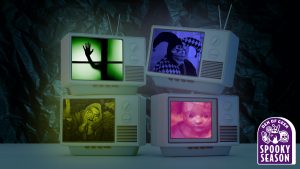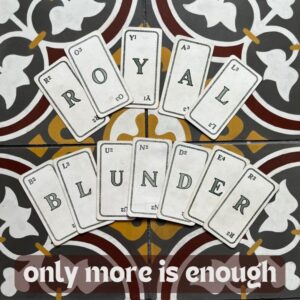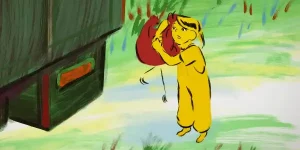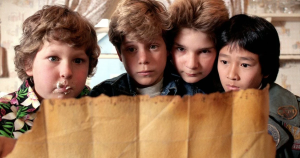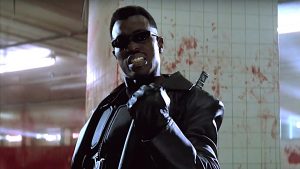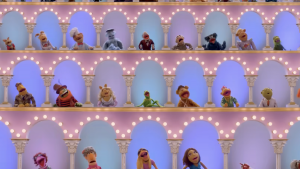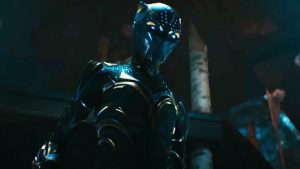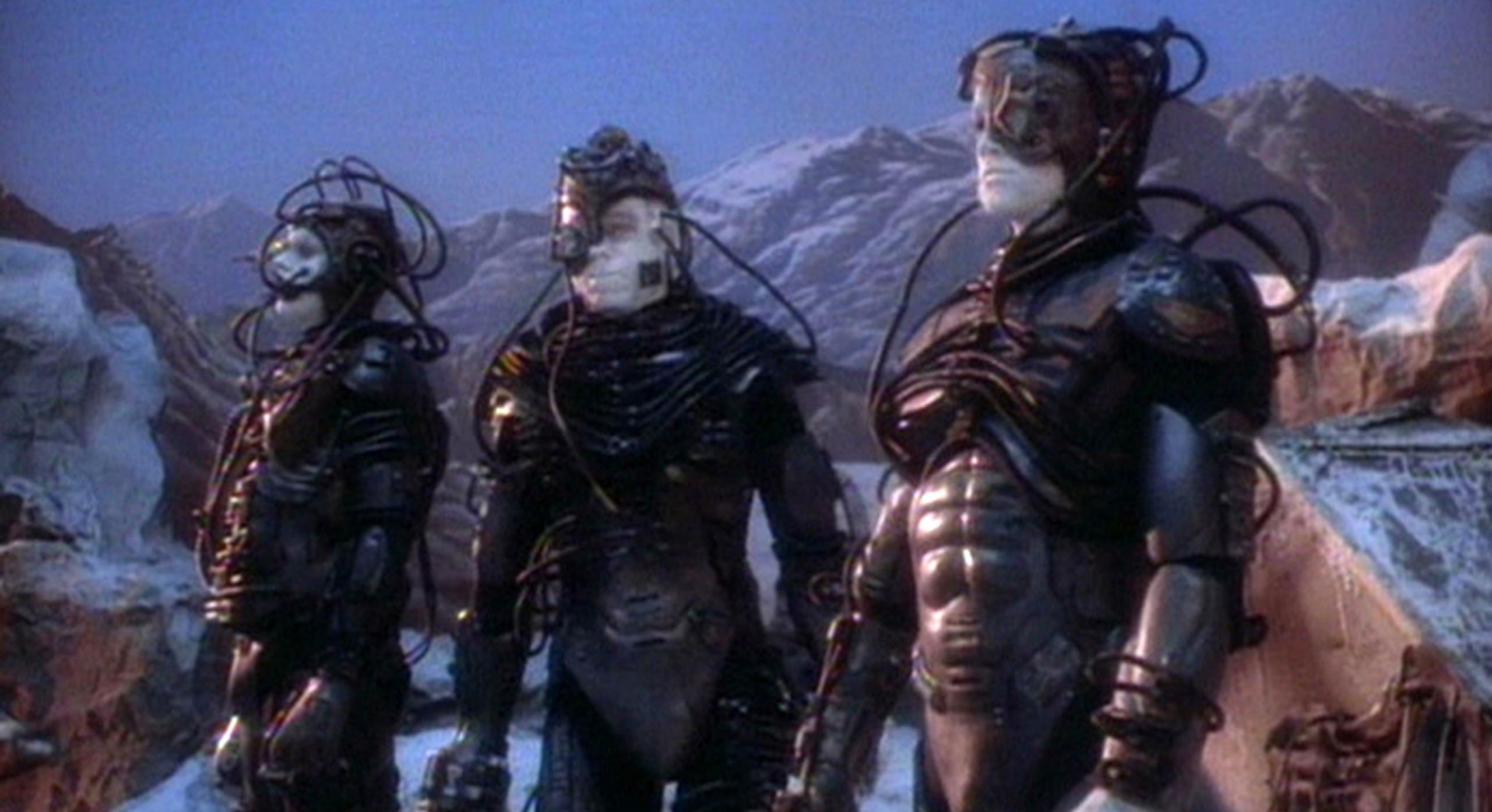
As a franchise about human progress and the values of cooperation instead of competition, Star Trek is more about its heroes than its villains. We tune in to see how Kirk will inspire his crew or to watch Picard call upon logic and empathy to solve problems. That focus might be why Trek has had some awful villains over the decades, stinkers like the Ferengi in Star Trek: The Next Generation, Armus, or the Kazon.
But when Star Trek does introduce a character who truly challenges our heroes, not in terms of might or even cunning, but in terms of their principles, then things get interesting. The series has always done well with baddies such as Gary Marshall, a human who went too far in his search for more, traitors like Michael Eddington and Seska, or the incomprehensible and uncaring Kivas Fajo from TNG‘s “The Most Toys.”
But the very best of the worst, those who challenge the very concept of Starfleet and the Federation and leave us wondering about our heroes, are these 15 stand outs.
15. The Duras Sisters
Star Trek III: The Search for Spock completed the Klingon reinvention that began with The Motion Picture, changing not just their physical appearance but also their attitudes. From that point on, Klingons became more warlike and obsessed with honor, mostly losing the duplicitous qualities on display in The Original Series.
Introduced in The Next Generation, the Duras Sisters Lursa and B’Etor do talk a lot about honor and they do go into battle to prove their worth in war. But they are also two of the most treachorous characters in Trek history. Wonderfully played by Barbara March and Gwynyth Walsh, Lursa and B’Etor plague Picard and Worf throughout TNG, at least until their death in Star Trek: Generations. Even then, however, their legacy remains so odious that Worf still refers to himself as the Bane of House Duras.
14. The Diviner
Star Trek: Prodigy is a very different style of series, not just because it’s an animated kid’s show. The series also features an overarching villain in the form of the Diviner, who rules the asteroid Tars Lamora where the Prodigy kids were enslaved. Voiced by the great John Noble, the Diviner was pure evil in Prodigy‘s first season, despite his connection to daughter Gwyndala, a member of the Protostar crew.
However, Prodigy‘s triumphant second season fleshed out the character, making him more of a three-dimensional antagonist than a standard baddie. Throughout the season, we see how a hopeful Vau N’Akat called Ilthuran witnessed the destruction of his planet during a civil war sparked by the arrival of the Federation, and how he became the Diviner to stop it. The revelations add shades of complexity not just to the Diviner as a villain, but to the United Federation of Planets itself.
13. Admiral Cartwright
Star Trek has a long history of terrible admirals who compromise Starfleet’s morals for their own ends. Few, however, can do worse than Admiral Cartwright, one of the true villains in Star Trek VI: The Undiscovered Country. Played by Brock Peters, who would go on to portray the much more lovable Joseph Sisko in Deep Space Nine, Cartwright violates the very principles of Starfleet.
Star Trek VI revives the Cold War metaphor that drove many TOS episodes, presenting Klingon Chancellor Gorkon (David Warner) as a Gorbachev-type person who tries to broker peace between the Klingon Empire and the Federation. Cartwright represents American right-wing hawks, as he undermines those talks through Gorkon’s assassination, hoping to keep the war going and shore up his power in Starfleet.
12. Gul Madred
Speaking of David Warner… Captain Jean-Luc Picard is the picture of dignity and self-control. So anyone who reduces him to a trembling, self-doubting mess must be truly evil. That’s the case for Gul Madred, who captures and tortures Picard in the classic TNG two-parter “Chain of Command.”
Forever keeping his cool and even presenting himself as a friend, Madred plays a simple game with Picard. Madred promises to cease the torture and set Picard free, if the Captain will just admit that he sees five lights in front of him despite it actually only being four. Knowing that the first duty of every Starfleet officer is to the truth, Picard refuses, insisting that there are four lights. The apparent simplicity of Madred’s demand, and the ruthlessness in which he pursues it, makes Madred one of the worst.
11. Captain Gabriel Lorca
We should have known Lorca was bad when he listed Elon Musk as one of history’s great inventors. As played by Jason Isaacs (hello), Captain Gabriel Lorca is one of the highlights of Discovery‘s tortured first season. Presented as a wartime Captain of a science vessel, Lorca initially appears as a means for Michael Burnham to make her way back into the Federation’s good graces, after she’s charged with mutiny and blamed for starting a war with the Klingons.
However, as the season progresses, we learn that Lorca is an escapee from the Mirror Universe who wants to use Discovery‘s spore cell warp capabilities to his own ends. Mirror Universe stories tend to divide Trekkies, even more so than Discovery itself. But no one can deny Isaacs’s always-magnetic performance and his unique twist on the “evil Starfleet” trope.
10. Nero
None of the Kelvin-verse movies have good villains. Even the best film in the trilogy wastes the great Idris Elba by burying him under makeup and saddling him with dumb motivations. It’s not hard to see the Romulan Nero from 2009’s Star Trek going the same way, with his ostentatious face tattoos and ridiculous ship that’s apparently a mining vessel but looks like Satan’s hair pic.
However, Eric Bana saves Nero from the reboot dustbin with a committed performance and surprising line readings. His outburst when hearing that Romulus did not get destroyed, or his way of saying “Hello Christopher, I’m Nero” to Pike bring an unpredictability to the character, fitting the non-stop action that is J.J. Abrams’s version of Star Trek.
9. Nick Locarno
Even if he never returned as a big bad in Lower Decks, Nick Locarno would be a pretty notable Star Trek villain. After all, he used his standing as the son of a prominent Starfleet admiral (seriously, those guys are no good) to pressure his fellow Academy cadets in Nova Squadron into trying a restricted maneuver. When the attempt inevitably led to the death of one of their members, he forced the others to stay quiet, including Wesley Crusher.
Because contract shenanigans drove Paramount to change Locarno into Tom Paris for Voyager (while still keeping a similar backstory and the same actor, Robert Duncan McNeill), Locarno never got a redemption arc. Instead, he shows up in Lower Decks as a baddie who tries to turn the lower ranking members of various crews into a resistance force… albeit one with him at the center.
8. General Chang
William Shatner naming the heaven planet “Sha Ka Ree” wasn’t enough to pull Sean Connery to play Spock’s renegade brother Sybok for Star Trek V. But Shatner’s time as a stage actor did lead the great Christopher Plummer to signing on to play loquacious and battle-hungry Klingon General Chang in The Undiscovered Country.
General Chang isn’t quite as devious as the aforementioned Admiral Cartwright, but he ranks higher on this list, thanks to Plummer’s delightful villainous performance. With an eyepatch screwed right onto his face and a predilection for quoting Shakespeare in Klingon (that’s the only way to enjoy it, after all), Chang steals every scene that he’s in.
7. Lore
Let it never be said that Brent Spiner let an opportunity pass him by. As soon as Data became the de facto second lead of TNG, Spiner took every chance he could to put new spins on his character. We can debate the merits of the Soong family he played or of his various holodeck characters, but Spiner’s best non-Data character remains Lore.
Through Lore, Spiner channels the inherent kindness of Data and spins it into an evil other. Lore has the same sense of wonder about humanity that drives Data, but it makes him want to study them like a scientist dissecting a frog. The fact that he does it with charm and a smile, even when aligning himself with the pathetic Pakleds, makes him all the better.
6. Kai Winn
Oh my child, you didn’t think Kai Winn would make this list? No villain worth their salt thinks of themselves as a villain. They always believe their cause righteous, and no one has ever been more self-righteous than Kai Winn, the Bajoran religious leader from Deep Space Nine.
Played with spine-chilling condescension by the great Louise Fletcher, who puts a warmer and crueler spin on her signature Nurse Ratched character, Kai Winn serves as a counterpoint to Sisko. Where exposure to the Prophets gives Sisko an insight that no one in Starfleet or on Bajor can understand, Kai Winn shows how that confidence can turn cruel, self-serving, and, in the end, self-destructive.
5. Kor
With apologies to Worf, Kor might be the greatest Klingon in Star Trek history. After all, Kor alone properly bridges the two generations of Klingons (we’re all still ignoring the Discovery redesigns, right?), making the two different takes feel of a piece. Kor first debuted as a glowering opponent to Captain Kirk in TOS. There, the boisterous figure prided himself on his ability to match wits and outsmart Starfleet’s finest.
Although he ascended to Dahar Master, he and his associates Kang and Koloth were shells of themselves when they returned to the screen on Deep Space Nine. It was only through his friendship with Jadzia Dax that Kor regained his honor, eventually sacrificing himself in the Dominion War. With every version of Kor, actor John Colicos met the moment (except for the version from The Animated Series, in which James Doohan voiced Kor), the first to show the depths within the Klingon hearts.
4. The Borg
The terrifying part of the Borg is right there in their name. There isn’t one Borg, nor is there properly plural Borgs. There is just the Borg. The Borg are the dark mirror of the Federation, who likes to believe that they recruit new planets and civilizations with a hand of welcome and allow for difference. The Borg labor under no such delusions, understanding that they force other cultures to assimilate, taking in their knowledge and leaving nothing else behind.
While it is true that concepts such as the Borg Queen and overexposure have dulled some of the Borg’s power, those early appearances still send a chill down this viewer’s spine. The sight of Picard revealed as Locutus, or even the way Q hurls the Enterprise into deep space to meet the Borg, still carries a power that no bad seasons of Picard can change.
3. Q
Then there’s Q. Like Mirror Universe or Holodeck episodes, Q is an acquired taste. He brings the many god-like characters from TOS into the TNG-era, and their silliness along with them. After all, for all of his power, Q prefers pranks over actual menace, making the Enterprise crew act out a Robin Hood story or battling Sisko as an old-timey pugilist.
Yet, we can never forget the stories that bookend Q’s appearances (at least at this point). He was introduced as a powerful being who judges humanity for their brazenness to travel so far from home. As the teaser at the end of Picard season three shows, that trail still continues today. Furthermore, John de Lancie manages to sell every part of Q’s behavior, from his playfulness to his cruelty.
2. Gul Dukat
Everything hinted by Gul Madred came to full fruition in Gul Dukat, played by Marc Alaimo. It’s not just that Dukat is heartless, such as when he called up Kira to remind her about his romance(?) with her mother. It’s not just that he’s delusional, wondering why there are no statues of him on Bajor. It’s that he’s dedicated to a might-makes-right philosophy that the Federation shares, even if they won’t admit it.
Dukat believes in the supremacy of the Cardassians, and believes that it was proven by their conquest of Bajor. He can accept that Starfleet defeated the Cardassians, at least temporarily, but that’s not enough to make him respect the Bajorans, who did after all need someone stronger to set them free. Spouting the logic of despots, both real-world and imagined, with a lizard’s smile on his face, Dukat is the ideal enemy to the morally-complex Sisko because he knows what he wants and believes and isn’t afraid to go for it.
1. Khan Noonien Singh
So great was Khan as a challenge to Kirk, so powerful was Ricardo Montalban as a double to William Shatner, that the two characters never actually share the screen in Star Trek II: The Wrath of Khan. If Shatner and Montalban were somehow in the same shot, there would be no scenery left, as the two would devour it all by the end of their first scene. That sounds like an insult, but it’s truly not. Khan is so imperious that we believe he’s an unfrozen conqueror who could convince a Starfleet officer to abandon her post and follow him. We believe that Khan is so filled with righteous anger toward Kirk that he would do anything to destroy the Captain, even killing himself in the process.
Khan is everything that Star Trek needs in a bad guy. He’s an explorer and at the peak of human ability. He’s strong and brave and philosophical. And he’s gone bad, humanity’s hopes for itself gone wrong and evil, perhaps proving that Q is correct to doubt us.
The post The Best Star Trek Villains of All Time, Ranked appeared first on Den of Geek.
